About Our Toilets
The ultimate guide to Eco ToiletsTable of Contents
Composting Science
Types of Toilets
Urine Diversion
How to Use a Composting Toilet
Toilet FAQs
Maintenance Tips
The Science of Composting Eco Toilets
Our top of the range eco toilets, are composting toilets that use a natural aerobic process called thermophilic composting. Aerobic microorganisms (AKA microbes), including actinomycetes bacteria and fungi, break down the waste which produces heat and removes pathogens from the material. This process transforms waste into an odourless compost that is safe to handle. The length of time to compost depends on climate, chamber size, and composting conditions.
The four main factors affecting compost are:
The Four Main Factors Influencing Composting
Moisture
Too dry and the dehydrated microbes will hibernate and eventually perish. But too wet and the conditions in the chamber become anaerobic killing the microbes. The perfect balance is 60% of moisture content by weight.
Oxygen
The incorporated ventilation is a simple fan that draws air through the composting chamber and disperses it externally. This encourages airflow for the oxygen-breathing microbes.
Carbon & Nitrogen
Microbes utilise both carbon and nitrogen to maintain a healthy lifestyle and to grow and reproduce, forming a strong culture. An ideal C:N ratio is 25:1 for a composting toilet, hence the use of a carbon-rich bulking agent to balance the naturally nitrogen-rich human waste.
Temperature
The key composting microbes are thermophilic, meaning that they create heat and they prefer warmer conditions. This is why the composting process slows down and eventually halts when the chamber is cooler than 12 degrees Celsius (53.6 degrees Fahrenheit). Thankfully, the cold won’t kill off the microbes but just cause a state of hibernation from which they can be woken up.
The Four Stages of Composting

Mesophilic
Mesophilic organisms, which thrive between 20 – 30 degrees Celsius (68 – 86 degrees Fahrenheit), are breaking down easily decomposable materials like toilet paper. The temperature increases as they proliferate.

Thermophilic
Thermophilic organisms grow and thrive between 45 – 70 degrees Celcius (104 – 158 degrees Fahrenheit). This is the rapid decomposition of complex organic materials, generating higher temperatures and killing off pathogens.
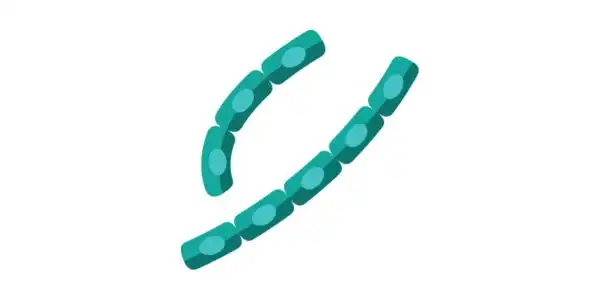
Cooling
When there’s nothing left for the thermophilic organisms, the pile starts to cool and the mesophilic organisms return as the majority. Actinobacteria (and maybe some fungi or mould) will finish decomposing any remaining materials at a slower pace.
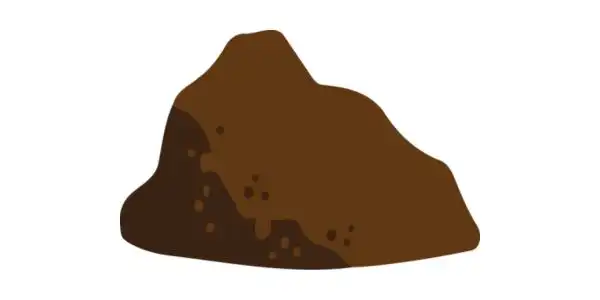
Curing
Naturally, when the pathogens are killed off and all the material is broken down, the culture of microbes starts to enter a stage of hibernation. The composting pile has matured into a humus, with an appearance and consistency similar to that of fresh potting mix.
Finished Compost
In ideal conditions, compost could be completed within a few months. But it does depend on the composting chamber and climate, it could take over 12 months for the compost pile to reach the curing phase.
How to tell if the compost pile is ready?
- Appear slightly crumbly and moist with an earthy smell, similar to a fresh potting mix.
- No longer producing heat and will have reduced in size by nearly half
- Organic material and toilet paper is no longer visible.
Where to use composted waste?
- You can bury the compost 10 cm below ground around fruit or nut trees, lawns, flower beds and shrubs
- Avoid contact with edibles such as vegetables and herbs
Types of Eco Toilets
Split Systems
A split system is a type of eco toilet that offers the advantage of separate chambers and pedestals, utilizing underfloor space to accommodate larger chambers than self-contained systems. Split systems are available in two composting methods: batch or continuous, offering flexibility and eco-friendly solutions for waste management.

Batch systems require regular rotation of chambers. When the in-service chamber becomes full, it is set aside to finish composting and replaced with the next chamber.

With continuous systems, material is composted and collected from a single unit. This is achieved through larger tanks that can accommodate a pile in the thermophilic phase of composting within the central mass, but in the mesophilic phase on top, and the curing phase at the collection point.
Self-Contained Systems
This makes self-contained units perfect for small spaces without usable underfloor clearance.

The majority of the self-contained systems have a batch style composting process. Either through interchangeable chambers (rotated in and out like the split systems) or by emptying the internal collection chamber
There are also automatic systems with built-in mixers and heaters to accelerate the composting process.
Urine Diversion
Diverting urine away from your eco toilet means it can be more efficient during colder conditions. Because the composting toilet can’t rely on evaporation or drainage hoses to manage excess liquid.
It’s important to remember that urine is a source of nitrogen-rich moisture; so if this is being taken away from a composting pile, the moisture and nitrogen may need to be replaced or the composting process will slow down. Which isn’t a problem when the external climate is freezing temperatures and the composting process has already halted.
Types of Urine Diversion
Self-contained toilets with urine diversion tend to have chambers that are too small to allow for the entire composting process to take place. When the waste is being disposed of into an external chamber to compost, diverting urine away from solids can help save on space.
There are two main types of urine diversion toilets:

Urine can be diverted away from the pedestal into an external collection method, an evaporation trench, or greywater filter.

Urine can be collected in an internal chamber and emptied regularly.
How To Use A Composting Toilet
After every liquid deposit, simply close the lid.
After every solid deposit:

1. Add bulking agent
A generous cup of bulking agent to cover the recent solid deposit
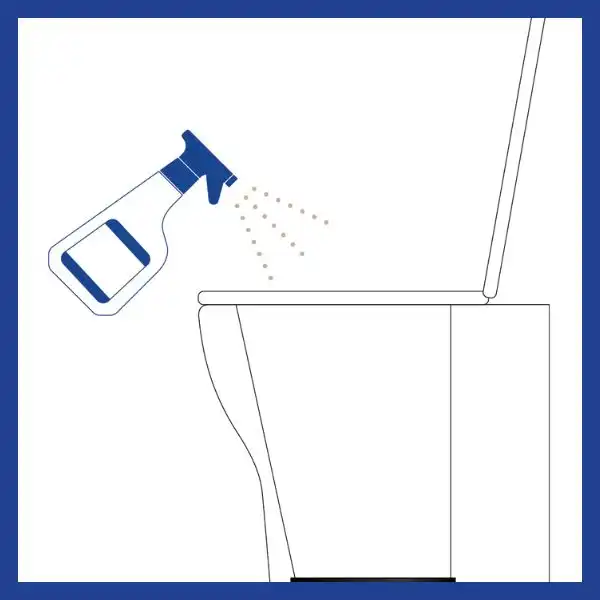
2. Spray Enzyme Solution
Spray an enzyme based solution around the bowl to moisten it and use a toilet brush to remove any skids
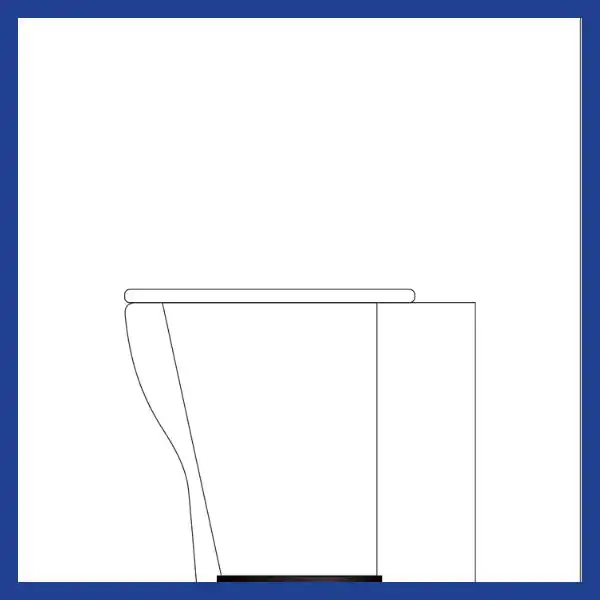
3. Close the lid
Keeping the lid closed keeps a healthy eco system in the chamber
Do not dispose of in the chamber:

Food waste
This is going to attract unwanted attention from pests

Chemicals and cleaning agents
Harsh chemicals are going to kill off the culture of microbes
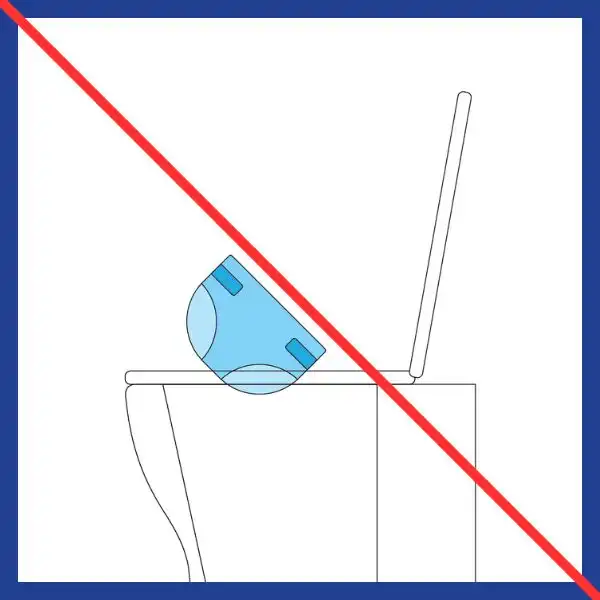
Sanitary products and nappies
These are either not compostable or take too long to break down
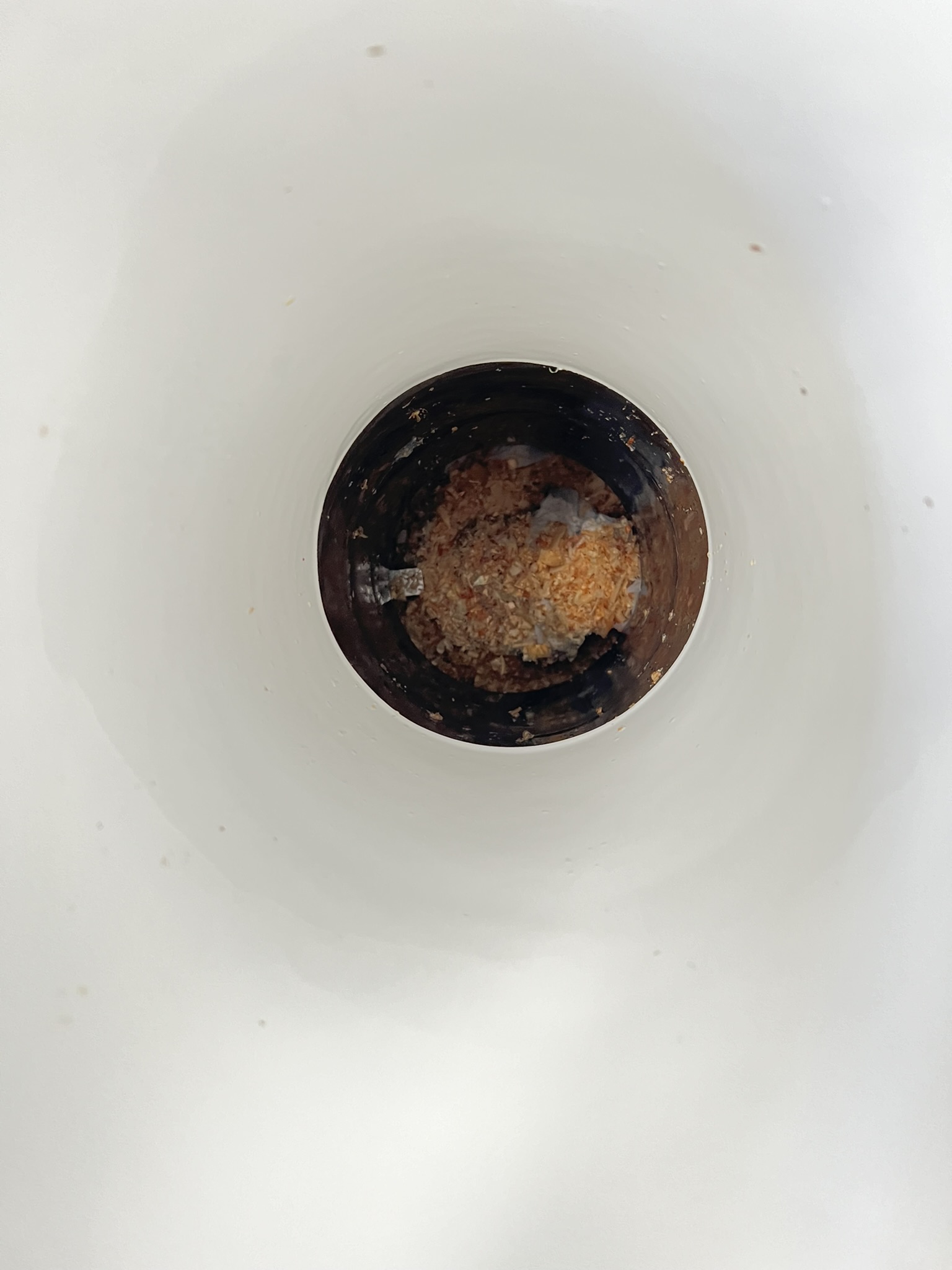
Look into the toilet and tell me what you see
This is a picture of our Nature Loo Alectura working display at our Brisbane warehouse and showroom. Staff and guests are encouraged to use it regularly. If you were to put your head into the toilet bowl, this is what it would look like.
The chamber is fairly full, but not ready to be changed yet, and the bright lighting shines on the glossy white pedestal. The chamber itself is usually quite dark but we have tried to get a clear example for you. So one of us had to bravely hold our phone over the loo with great fear of dropping it in. So I don’t recommend trying that trick at home.
Following the instructions the last thing to go into the toilet is either bulking agent or toilet paper – so this is what we see. Funnily enough, we think it resembles a bush turkey mound.
FAQs About Eco Toilets
Can I install one myself?
Yes. Someone with basic handyman (or handywoman) experience can install Ecoflo waterless composting toilets in about half a day. Depending on which state the toilet is to be installed in, a registered plumber may have to sign off on the finished installation. A registered plumber should be used from the start if you are installing:
- The Microflush toilets (3000 models, Clivus Multrum CM8-CM40) as this is more complicated than the 100% waterless toilets
- A pump well for the GWS10 greywater treatment system if the site does not have a favourable slope allowing the water to drain under gravity
- An advanced secondary greywater treatment system
Ensure you follow the installation instruction manuals provided and if required do not hesitate to call our customer support on 1300 138 182
How do I clean and maintain this toilet?
- Cleaning the inside of your pedestal use the diluted Nature Flush Enzymes and toilet brush – DO NOT USE CHEMICALS
- Cleaning the outside of your pedestal use a mild detergent or diluted white vinegar
- For CM LP; CM HP units rotate the mixer arm each week to aid in lengthening the time a chamber can be in use, other systems please consult your manual
- Every 6 months spray your fan with WD 40 to length the lifespan of your fan (this helps loosen any dirt etc.. in the ball bearings)
Do composting toilets smell?
There is absolutely no odour in a bathroom containing an Ecoflo waterless composting toilet. There is actually less odour than you encounter with a normal flushing toilet. The reason for this is that all Ecoflo systems use low-wattage ventilation systems to draw toilet odours down the pedestal, through the composting chambers, and out an external vent pipe above your dwelling, leaving your toilet room completely odourless – no need for deodorizers!
How does composting differ from alternative wastewater solutions?
Performance
There are a number of alternative on-site domestic wastewater treatment systems that use non-composting technology to deal with household waste, such as worm farm systems, septic systems and aerated wastewater treatment systems.
The table below outlines a few reasons why composting toilets are better for your back pocket and the environment.
| Worm Farms and AWTS/ATU Treatment Systems | Composting Toilet with a Greywater Treatment System |
| Waste 35,000 litres of water per year per household | Uses none and wastes none |
| 2-3 times more expensive to purchase | Relatively inexpensive to purchase |
| Expensive servicing by the third party (prices vary greatly depending on location) | Inexpensive self-servicing |
| Certified by state health depts. as not being health hazard | Certified by state health depts. as not being the health hazard |
| Toilet odours linger | All odours immediately and constantly drawn away by a fan |
| Black and grey water treated | Black and grey water treated |
| Flush toilet with unnecessary water-wasting cistern | Attractive and easy-to-clean pedestal designed to avoid soiling |
Price
The following table compares the cost of an Ecoflo waterless composting toilet and separate greywater system against other systems. The table is offered only as a guide. Installation costs differ widely depending on local site conditions.
| System | Equipment and Installation Cost | Ongoing Cost* |
| Waterless composting toilet with primary grey water treatment | $6,000 – $7,000 | Extremely low |
| Septic Tank | $7,000 – $10,000 | Low |
| Septic Tank with large sand filter or reed bed | $12,000 – $15,000 | Low |
| Aerated water treatment system | $12,000 – $18,000 | $500-1,000 per year |
| Worm farm system | $12,000 – $18,000 | $500 per year |
*Includes council mandated service contracts, electricity, replacement pumps and council fees.
How do composting toilet systems work?
All of our systems are designed to ensure the correct levels of moisture, temperature, oxygen, carbon and nitrogen required to achieve good composting are present in the chambers. Moisture is managed through drainage and evaporation systems which remove excess liquid from the solids. Oxygen is regulated using low-wattage ventilation systems which aerate the compost and also serve to evacuate any odours from the toilet room. The ideal temperature is achieved through the exposure of the black Nature Loo/Clivus Multrum chambers to sunlight and the use of heating elements for Sun-Mar/EcoLet systems. The carbon/nitrogen balance is managed by regularly adding carbon-dense mulch to the pile. At the end of the composting process, microbes have broken down the waste into humus, a soil-like substance with an earthy odour.
For more information, see About Toilets
What do I do with my greywater?
A composting toilet only handles your solid waste, also known as black water. The greywater produced by your shower, bath, basins, laundry and kitchen sink can be treated to the primary or secondary standards.
For more information, see About Greywater
What do I do if there are flies?
Vinegar flies are very small and can penetrate standard fly screens. Use midge mesh. They are active during the warmer months of the year and are attracted to materials that are decomposing. To minimize the risk of them being attracted into your toilet chamber you must ensure that the seat and lid are closed at all times, except when the toilet is in use. It is important to avoid flies entering the system because once they have moved in they can multiply.
Use the following remedies to eliminate or reduce the problem:
Firstly, check that your compost pile is not too dry. It should be moist, not sodden. If the pile is too dry, the composting process does not occur and no heat is generated in the pile.
The ideal moisture content is 60%. If it is dry add 5 liters at a time over a period of several days until it is moist.
Yates Tomato Dust: Available from nurseries. The active ingredients are sulfur and spinosad. The latter is derived from naturally occurring beneficial soil bacteria. The microbes in your toilet will break the spinosad down into carbon dioxide and water. Spinosad is effective thru contact and ingestion. If you know vinegar flies are active in your area we suggest you dose your toilet twice per week from October to April, otherwise wait till they appear. The most effective method of dosing is to sprinkle liberally directly into the chamber having lifted the lid. Alternatively, sprinkle down the pedestal before use (when dry)
Comfrey: Comfrey grows prolifically. It accelerates composting and deters vinegar flies. Drop a handful of comfrey leaves into the chute once per week.
Garden lime: A light covering of lime, available from nurseries, sprinkled over the pile weekly. Lime does not kill flies but deters them by neutralizing the urine.
Is a composting toilet right for me?
If the location where you want to install a waterless composting toilet can be connected to a town sewerage system, chances are your local council will insist that you connect to it.
However, as of 2007, some metropolitan city councils are beginning to understand the significant role waterless composting toilets can play in water conservation and are beginning to allow their use in sewered areas. We suggest you contact your council plumbing officer and question them about this. There is no single more effective way to reduce your water consumption than to stop flushing water down the toilet. If the response is unsatisfactory, speak to their supervisor or give us a call.
Of course, not all of our customers feel compelled to discuss their toilet arrangements with the council! Many waterless composting toilets are installed without referral to a council authority.
Once you are convinced a waterless composting toilet is right for you and your intended use, you’ll find all the information you need to make an informed purchase on our website.
Ecoflo can supply a suitable waterless composting toilet for any type of home, including a low and high set, slab floor and two-storey homes. We can also supply a toilet for mobile homes, granny flats, boats, weekenders, work sheds – just about any structure.
What do I do about "council approval"?
You are free to make your own decision regarding the type of treatment system you want to have. If you intend to obtain council approval for your new home you will need to submit a development application. Part of this will involve the treatment of your black and greywater. The council should approve your chosen system provided that the system is state government approved and the site is suitable. In rare cases, issues can arise with any system, however, expensive and elaborate, depending on soil type, size of block and proximity to watercourses and bores. However, in principle, the council does not have the right to object to a composting toilet based system as long as it is state-approved.
We regularly hear of councils trying to persuade people to install aerated water treatment systems (AWTS), rather than a composting toilet and separate greywater treatment. We understand that this is because councils collect fees from homes with an AWTS but are not able to do so with homes with composting toilets. The plumbing officer may also not understand the importance of the non-urbanised community of water self-sufficiency and the benefit to your land of the end product of a composting toilet. Nor is the council concerned about the energy consumption of an AWTS (two electrical pumps) and the chlorinated water that ends up on your land. This is particularly important for off-grid properties. Councils quote the average annual maintenance cost of an AWTS is $800 (chemicals, electricity, replacing worn out parts and servicing).
Should your council prevent you from installing a state-approved composting toilet we will happily talk to the relevant council department on your behalf. We also have a list of Geotech engineers who are happy to incorporate composting toilets in your plans. Some geotechs are in the pockets of AWTS suppliers and will attempt to persuade you to buy an AWTS, so please research your Geotech thoroughly before engaging in their services.
What do I have to do to start a composting toilet?
- Add 10-15cm of bulking agent to your chamber – evenly layered – you can start using your toilet now
- 2-4 days later add ½ packet of Nature Quick Microbes mixed with warm water to the chamber via the pedestal
- 7-10 days later add the second ½ packet of Nature Quick Microbes mixed with warm water to the chamber via the pedestal – your system is now fully activated with live bacteria
- Repeat these steps each time you start a chamber.
How do I dispose of composted material?
- Bury material to a minimum depth of 100mm;
- Bury it and plant a tree over it. But be careful with Australian native species. Some Australian native species which include the ‘Dwarf Silky Oak’ (Grevillia banksia), more than a dozen Banksia species such as the ‘Candle Stick Banksia (Banksia attenuata); and some rainforest species such as the Kurrajong (Brachychiton diversifolius) just to name a few, can be highly susceptible to Phosphorus. With truly P-sensitive plants a sudden shock or highly soluble forms of P, or a slow accumulation of excessive P, kills them. These plants have no ability to prevent excessive P getting into their roots. As more and more is taken up, the plant gets poisoned, mainly because the trace elements iron, manganese, copper and zinc all bind with the P to form very insoluble phosphates. This effectively prevents the plant from using the trace elements, resulting in such severe deficiency that the plant cannot function. For more information on Phosphate sensitivity in Australian native plant species, follow this link – Phosphorus Needs of Some Australian Natives.
- Adding builders lime (calcium hydroxide) at a ratio of 5-10% by volume to the buried compost will tie-up phosphorus and the high pH will help kill pathogens, parasites, etc, which may have survived the composting process. This can also deter animals from digging up the material. The pH effect will decline over time (say a few months) as the lime dissolves to form calcium carbonate.
What do I do when I am "using" the compost toilet?
- After urinating, do nothing except close the lid
- After every solid –
- Add a handful (250ml) of bulking agent into the system via the pedestal
- Add 10-12 squirts of the diluted Nature Flush Enzymes via the pedestal – this assists the bacteria in breaking down the newly introduced waste
- Close the lid
What are some tips for keeping a healthy composting toilet?
- Carry a spare fan
- Check your excess fluid hose for blockages, periodically
- Keep your pile at 60% moisture content (best for composting)
What does batch style or continuous style composting mean?
The difference between these types of composting toilets comes from the way the end product is processed and stored. Here’s a breakdown of how they work
Batch composting toilet system
With a batch composting toilet there is a series of buckets or trays that waste material is stored in. Because of the design of self-contained composting toilets, these buckets or trays are typically smaller than in a continuous system. This means that trays will need to be emptied or exchanged from time to time (additional trays or chambers can be purchased through our website).
This modular “batch composting” system allows capacity to be virtually unlimited. If usage increases, buy an additional chamber and rotate the chambers more often. Fill one, put it aside to continue composting, and put the second chamber into use. When it’s time to change chambers again, the contents of the first chamber should be well and truly composted. You then remove the compost, put it in your garden or bury it, and re-use the chamber.
Continuous composting toilet system
A continuous composting toilet system is usually made up of two parts – a chamber and a pedestal (three if you include the chute). The chamber will typically be installed below the home or dwelling where the composting toilet is being installed, hence why they’re called a split system as the chamber and the pedestal are ‘split’.
Because of the ability to have a separate chamber, split systems can usually take larger amounts of waste, therefore they can continuously maintain the composting process, hence the name continuous composting toilet.
What's the difference between a dry and a microflush composting toilet?
The type of toilet you can choose will ultimately come down to if you have access to water at your property or not. If you don’t have access to water or it’s access is minimal, then a dry flush toilet (a composting toilet that uses no water) will be the best option for you.
If you have access to town water or a decent rainwater tank supply, then the Microflush might be just the answer you’re looking for. Before you make your decision, let’s take a look at each system and their differences so you can make a more informed decision.
Dry flush composting toilets
A dry flush toilet is a composting toilet that uses no water. Typically they are made of two compartments – the pedestal and the chamber. Because these types of toilets use no water, the pedestal needs to be installed directly above the chamber. This means they’re suitable for homes where there is room and access directly under the bathroom or place you’re installing the toilet.
Microflush composting toilets
A microflush toilet system uses a small amount of water each time the toilet is flushed (Micro flush toilets use approx 0.5 litre per flush).
Because water is used in the flushing process, this enables Microflush pedestals to not have to be installed directly above the chamber, which gives you more placement options where space or access is limited.
Why should I buy a waterless composting toilet?
To Save Water
Each year a typical home contaminates and flushes 35,000 litres of drinking water down the toilet and into sewers. Ecoflo composting toilets do not need water, conserving this precious resource and saving you money in the process.
To Save Money
Our composting toilets and primary treatment greywater systems have minimal electrical costs, few moving parts, no pumps and do not require service or maintenance contracts. When compared to other wastewater management systems (such as aerated wastewater treatment systems) this represents an ongoing annual saving of $500 – $1,000 and is on top of the savings from a significantly lower initial investment and the opportunity to install lower capacity water tanks.
To Be Self-Sufficient
With a waterless composting toilet, greywater system, rainwater tank, compost pile, urine collection and solar system your house and garden can be entirely self-sufficient when it comes to water, waste management, fertiliser and energy.
To Add Value to Your Home
Just as water tanks add value to your home, so do waterless composting toilets, as we all strive to minimise water consumption and conserve resources.
“A water-wise home will attract a premium and may become the major contribution to achieving a sale.” – Leading property developer
For Environmental Benefits
Waste from flushing toilet systems attached to on-site wastewater treatment plants is normally treated with harmful chemicals for disinfection and consume so much energy in aerating and pumping that normal domestic solar power systems cannot handle the load. Ecoflo’s waterless composting toilets use a natural biological process, are environmentally-friendly and help return nutrients to the soil. Most systems consume minimal electrical power.
Why choose Ecoflo Wastewater Management?
Since January 2014, Ecoflo has been the only supplier with this specific endorsement for our quality assurance program and product performance. We offer a wide range of toilets and greywater systems certified to Australian and New Zealand standards. When you choose an Ecoflo waterless composting toilet, you’re not only selecting from the broadest range of systems and pedestals, but you’re also investing in a quality-assured, water-efficient solution that delivers exceptional value.
Can you see the waste?
Here is a picture of our working display at our Brisbane office and warehouse. We have made sure to take the photo with bright lighting and when the chamber is fairly full.
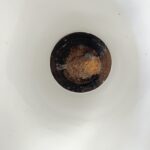
This image is the equivalent of having your head in the toilet bowl.
It’s not ready to be changed yet, because the mixing arms are still visible even while there is a slight cone effect. As you can see the wood shavings we are using as a bulking agent are the most visible. When following the instructions, the last thing to go into the loo is either the bulking agent or toilet paper so that’s what we see.
